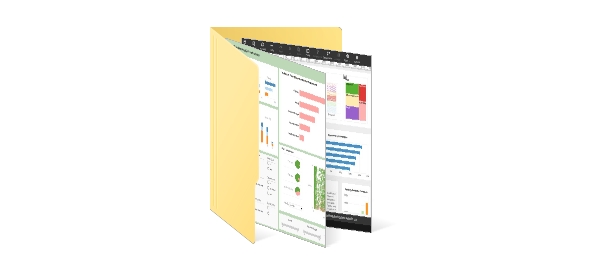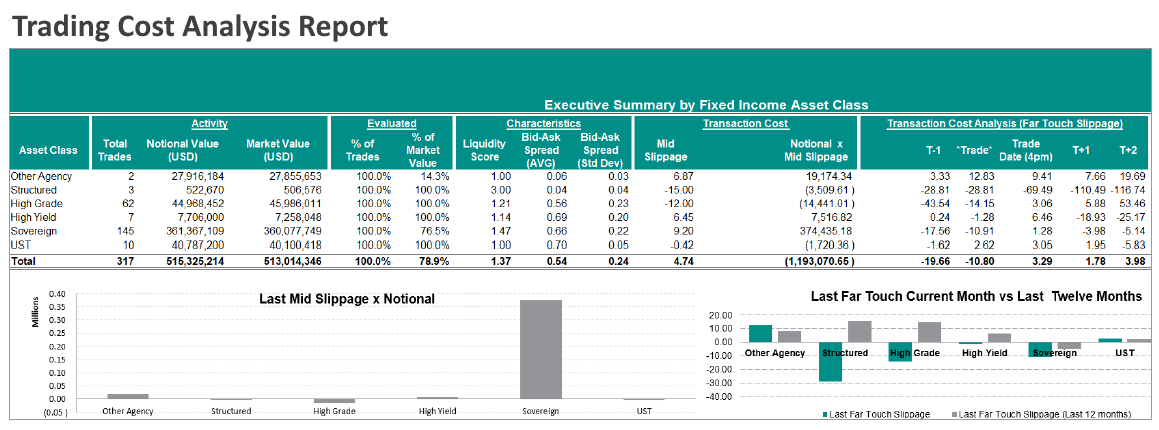What KPIs and Analytics Does a Trading Operations Analyst Use?
A Trading Operations Analyst plays a crucial function. These experts are in charge of controlling risks, optimizing trading methods, and assuring the seamless execution of deals. They largely depend on analytics and Key Performance Indicators (KPIs) to accomplish their aims.
This article explores the vital KPIs and statistics used by a trading operations analyst to manage the complexity of the trading environment.
| #1 Ranking: Read how InetSoft was rated #1 for user adoption in G2's user survey-based index | Read More |
Trade Execution Efficiency
Trade execution speed and accuracy are gauged by trade execution efficiency. This KPI aids analysts in determining any operational bottlenecks and assessing the success of their execution strategy. Analysts may minimize slippage and market effect by keeping an eye on execution efficiency, ensuring that deals are completed at the optimal pricing.
Order Fill Rate
The order fill rate KPI measures the proportion of successfully filled orders in relation to the total number of orders. While a low fill rate could point to problems with liquidity or execution tactics, a high fill rate suggests effective order management.
Trade Latency
The amount of time it takes for an order to be conveyed, carried out, and verified is known as trade latency. Low latency is essential, particularly for high-frequency trading, where even a few milliseconds may significantly affect earnings. Analysts may find opportunities for trading infrastructure improvement by keeping track of transaction latency.
Risk Management Metrics
The Value at Risk (VaR) measure is one of several risk management variables that trading operations analysts regularly monitor to make sure that trading activities are within acceptable risk bounds. VaR helps analysts manage risk exposure by quantifying the possible value loss of a portfolio over a certain time horizon and confidence level.
Market Impact Analysis
Analyzing market effect entails determining how a deal affected the market price. Analysts may optimize their trading tactics to reduce their market influence and prevent unduly shifting prices against their holdings by studying market impact.
Volume and Liquidity Analysis
Analysts may assess market conditions by analyzing trade volume and liquidity movements. A healthy market has high trading activity and plenty of liquidity, while low levels might raise execution risk. By keeping an eye on these data, analysts may adjust their plans as necessary.
 |
Learn about the top 10 features of embedded business intelligence. |
Trade Reconciliation Efficiency
Trade reconciliation makes ensuring that the deals actually conducted match the trading records. Effective reconciliation is essential for quickly identifying inconsistencies or mistakes. Analysts might avoid suffering financial losses as a result of trade disparities by keeping proper trade records.
Compliance and Regulatory Metrics
A crucial component of trading operations is compliance. To make sure that all transactions follow corporate standards and regulatory requirements, analysts keep an eye on compliance KPIs. Legal problems and significant financial fines are avoided thanks to these metrics.
Strategy Performance Metrics
Using KPIs like the Sharpe ratio, which calculates the risk-adjusted return, trade operations analysts assess the success of various trading strategies. These indicators help analysts decide which methods are producing the greatest outcomes and how to alter their plans accordingly.
Trade Cost Analysis
The direct and indirect expenses related to carrying out transactions are included in trade cost analysis. Brokerage fees, market impact fees, and opportunity charges are some of these expenses. Analysts may make their execution tactics more cost-effective by calculating the overall cost of trading.
 |
Learn the advantages of InetSoft's small footprint BI platform. |
Operational Efficiency Metrics
Metrics for operational efficiency assess the entire efficacy of the trading process. The length of time it takes to onboard new instruments, the precision of transaction confirmations, and the responsiveness of the trading infrastructure are a few examples of these KPIs. The trade process is improved and interruptions are reduced when operational efficiency is improved.
Trade Surveillance Metrics
Metrics for trade surveillance include keeping an eye out for unusual trading behavior or possible market manipulation. Analysts help to preserve the fairness and integrity of the financial markets by examining trade patterns and spotting abnormalities.
Transaction Cost Analysis (TCA)
The costs of completing a deal are evaluated using transaction cost analysis, encompassing both explicit costs (such commissions and fees) and implicit costs (like market effect). Trading operations analysts may reduce total trading expenditures by assessing these costs and using the information to decide on trading venues and execution tactics.
Order Book Analysis
In order to comprehend the dynamics of supply and demand for a certain item, analysts keep an eye on the order book. Analysts can forecast probable price fluctuations and make wiser trading choices by evaluating the depth of the order book and spotting major buy and sell orders.
Read what InetSoft customers and partners have said about their selection of Style Report as their production reporting tool. |
Slippage Analysis
Slippage is the difference between the completed price of a deal and the anticipated execution price. Monitoring slippage enables analysts to assess the success of their execution tactics and make necessary adjustments to reduce unanticipated price variations.
P&L Attribution
The sources of trading profit and loss are broken down using profit and loss (P&L) attribution. It aids analysts in comprehending the various contributions to overall trading success made by variables including market fluctuations, trading strategies, and execution effectiveness.
Counterparty Risk Metrics
By keeping an eye on the creditworthiness of the counterparties they deal with, trading operations analysts evaluate counterparty risk. Analysts can reduce the danger of dealing with counterparties who could breach their commitments by looking at credit ratings and financial health.
 |
Read how InetSoft was rated as a top BI vendor in G2 Crowd's user survey-based index. |
Market Volatility Analysis
Analyzing market volatility entails determining how much prices in the market fluctuate. Both possibilities and threats might be presented by high volatility. Analysts modify their trading methods in response to market circumstances using volatility measurements.
Benchmark Performance
Benchmark performance contrasts a trading strategy's or portfolio's performance with a predetermined benchmark index. With the use of this KPI, analysts may assess how well or poorly their strategies are outperforming the market and make the required modifications.
Capital Allocation Efficiency
Analysts of trading operations assess the effectiveness with which money is distributed across various trading positions or strategies. By maximizing capital allocation, one may reduce excessive risk exposure while ensuring that the most viable ventures get appropriate funding.
 |
Learn the advantages of InetSoft's small footprint BI platform. |
Order Routing Analysis
The efficiency of various order routing systems and trading venues is evaluated via order routing analysis. Analysts may decide on routing preferences based on data by identifying the routes and locations that provide the greatest execution results.
Behavioral Analysis
Analyzing behavioral patterns requires observing how market player's trade. Analysts may better understand market emotion and prospective price changes by spotting patterns and anomalies, which helps them create profitable trading methods.
Time in Force Analysis
Time in Force (TIF) is the amount of time that an order is in effect. To understand how the length of an order's validity influences the results of its execution, analysts examine TIF data and modify their methods as necessary.
 |
View the gallery of examples of dashboards and visualizations. |
Sentiment Analysis
To assess market sentiment, sentiment analysis keeps an eye on news, social media, and other sources. Analysts can predict changes in market patterns and sentiment-driven price fluctuations by studying public mood.


